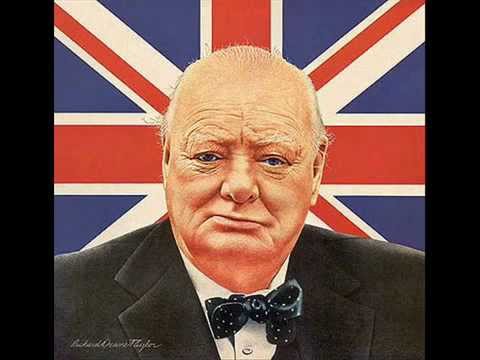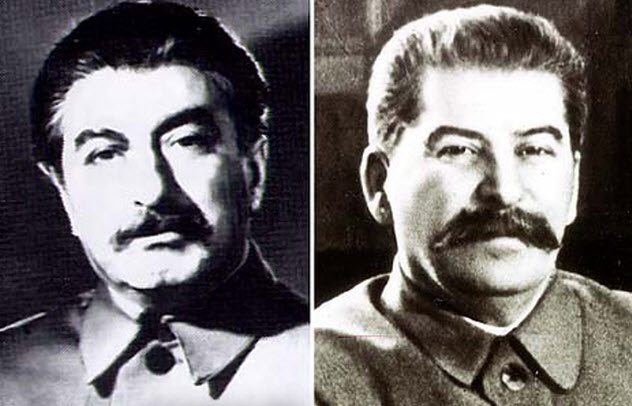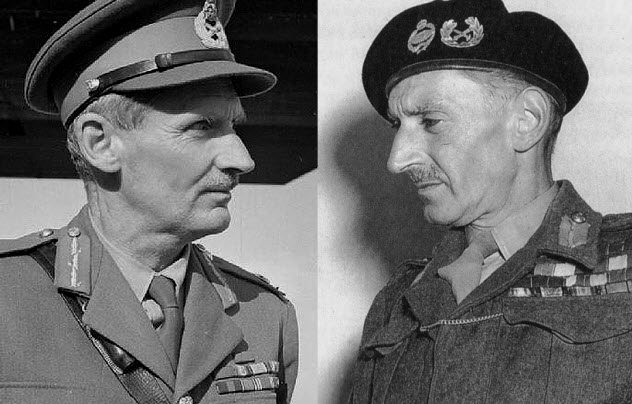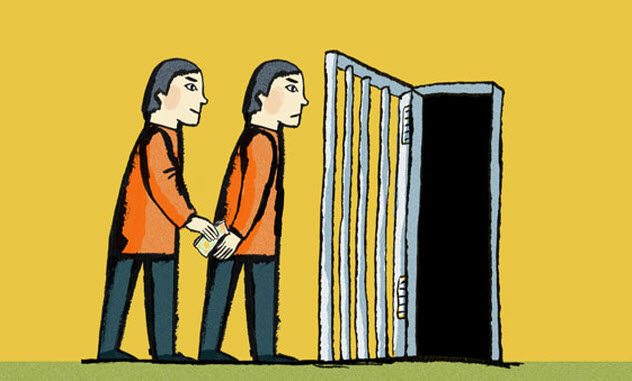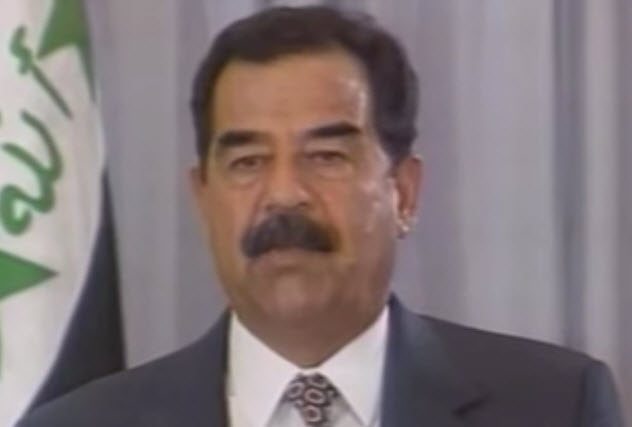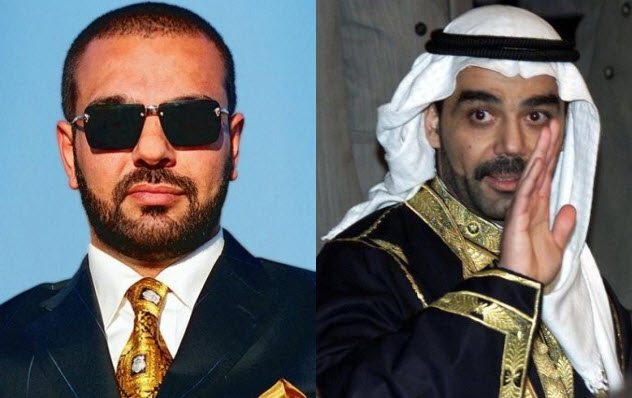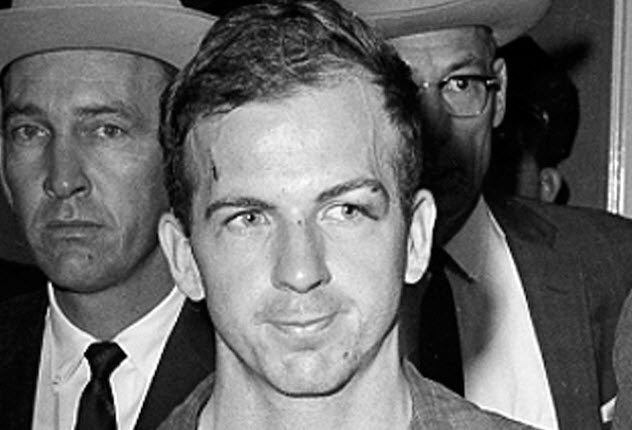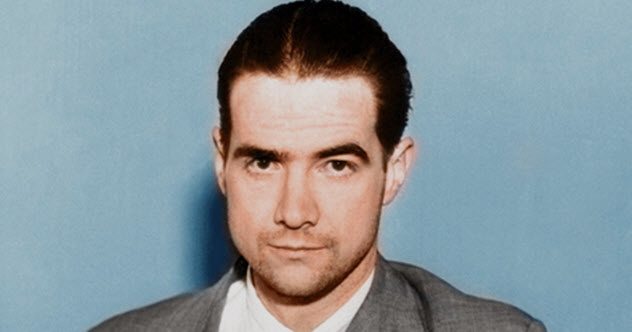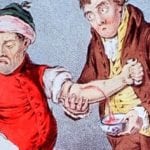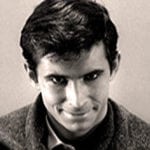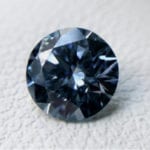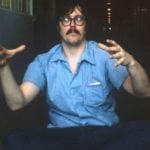And it can get a lot stranger. Where there is talk of body doubles and impersonators, it doesn’t take long for the conversation to turn to the murky world of conspiracy theories. Often, the accounts are just plain ridiculous. But sometimes, it is difficult to determine the difference between reality and pseudohistory. The following is a selection of verified and unverified accounts of the use of doubles, doppelgangers, and impersonators. We’ll let you decide.
10 Did Andy Warhol Use A Body Double As A Bizarre Form Of Performance Art?
On the night of October 2, 1967, Andy Warhol gave a speech at the University of Utah. By then, Warhol was big-time, labeled the “Father of Pop Art” primarily for his paintings of Campbell’s soup cans and silk screen prints of Marilyn Monroe. The audience was packed with over 1,100 people. Forty minutes of Warhol’s film **** (1967) was screened followed by a Q and A with Warhol. The problem was that he seemed noncommittal. According to journalist Angelyn Hutchinson, Warhol stood onstage in thick, dark sunglasses and a coat, giving “inane answers, or hardly any answer at all. Somebody asked him how he started his films, and he said something like, ‘In the beginning, I think.’ Just really dumb stuff like that.”[1] Warhol’s manager, Paul Morrissey later confessed that an impersonator had replaced Warhol for lectures at four universities, including Utah. According to Morrisey, Warhol thought that the impostor, Allen Midgette, was better for “public consumption” because he was handsomer and a superior public speaker. Some claim that it was performance art. After the hoax was revealed, Warhol announced that he planned on having a robot of himself made to send on lectures. In part, robots and doubles were life imitating art, like the copies he did of Marilyn, Elvis, and the Campbell’s soup cans.
9 Were Winston Churchill’s Most Famous Speeches Voiced By An Impersonator?
The idea that a voice actor replaced Winston Churchill on the BBC for some of his most important wartime speeches seems preposterous. But this idea has gained traction ever since voice actor Norman Shelley claimed in 1977 that he was the voice behind such famous lines as “We will fight them on the beaches” and “This will be our finest hour.” Historian David Irving became a proponent of the idea. Shelley had told him so, and Irving printed it as fact in his book, Churchill’s War. The story goes like this: Norman Shelley claims that Churchill was too busy with wartime business to deliver certain speeches over the wireless. With no recording devices in the House of Commons to pick up Churchill’s speeches, the task of repeating them over the wireless was delegated to Shelley.[2] In 1990, the plot thickened when US speech company Sensimetrics analyzed 20 of Churchill’s speeches and discovered that three of them were voiced by someone else. Two of the three addresses were the famous Dunkirk (“Fight them on the beaches”) speech and “The Finest Hour” speech. In 2000, Shelley’s son, Anthony, presented what he saw as proof of his father’s role as Churchill’s voice stand-in: a 78-rpm record labeled BBC, Churchill: Speech Artist Norman Shelley dated September 7, 1942. Apparently, on this record are uttered the famous words, “We shall fight them on the beaches.” Then things get murky. David Irving’s claim that he had been told by Shelley that he was Churchill’s stand-in is problematic. Apparently, this interview happened in December 1981, which was 16 months after Shelley’s death! Furthermore, Churchill author Richard M. Langworth states that eyewitness testimony has proven that Shelley did not deliver the wartime speeches at the BBC. Langworth adds that the 1942 recording was not the Dunkirk speech but an obscure speech that no one has heard of. And what of Sensimetrics’s judgment that the three speeches were voiced by someone other than Churchill? Peter Orr of Argo, who distributed the audiocassette versions, believes that Sensimetrics did not consider how the human voice can change throughout the years. Nor did they consider slight variations in recording speed.
8 Felix Dadaev: Stalin’s Political Decoy
In 2008, 88-year-old Felix Dadaev publicly announced that he was Joseph Stalin’s political decoy, a role he was forced to keep secret for decades. When the Putin regime granted Dadaev permission to reveal his identity, he wrote Variety Land. In the book, Dadaev revealed that he was one of four stand-ins for Stalin at public events. Life as Stalin’s double began in 1943. After a year of recovering from serious war injuries, Dadaev was taken by the NKVD (the KGB’s predecessor) to get a top secret makeover. He was in his twenties at the time. But with the addition of make-up and the Soviet leader’s haircut and mustache, Dadaev became almost physically indistinguishable from the 60-year-old Stalin. To complete the transformation, Dadaev watched speeches and footage of Stalin to copy his mannerisms. Dadaev managed to convince officials at the Kremlin that he was Stalin and so was authorized to become Stalin’s political decoy.[3] At first, Dadaev only doubled for Stalin in his car. But it wasn’t long before Dadaev started to meet with party officials. For a prominent occasion, he impersonated Stalin in a parade, standing on the central dais of a mausoleum in Red Square. But Dadaev’s most important role as a political decoy almost ended in disaster. In February 1945, a plan was set in motion to secretly fly Stalin to the famous Yalta conference to meet with British Prime Minister Winston Churchill and US President Franklin D. Roosevelt. To confuse foreign intelligence, Dadaev, who was decked out in Stalin’s uniform, boarded a much-publicized later flight. But as Dadaev recalled, “It didn’t work. Two attempts were made in Yalta to kill the real Stalin. Our intelligence failed. I was back in Moscow by then.” It wasn’t Dadaev’s fault, and he continued his role as a decoy until Stalin’s death on March 5, 1953.
7 Did General Montgomery’s Double Help Win The Battle Of Normandy?
In the weeks leading up to D-day, the Allies set in motion a plan to deceive German intelligence into believing an invasion would take place at Pas-de-Calais rather than Normandy. Fake equipment, fake radio transmissions, and a fake army led by General Patton were used to bolster this deception. The ruse went further. After seeing actor Miles Mander portray Field Marshal General Bernard Montgomery in the film Five Graves to Cairo (1943), Lieutenant Colonel Dudley Clarke had an idea. What if a Montgomery impersonator appeared in a completely different part of the world right before the D-day invasion? Would that fool the Germans as to when and where the invasion was to take place? Montgomery was one of the architects of the coming invasion, so success depended on matching Monty’s height, appearance, and body language. The natural first choice was Miles Mander, but he was ruled out because he was too tall. The second candidate broke his leg in a car accident. The mission’s success rested on the third candidate, M.E. Clifton James.[4] James was a bit of a wild card. He was an Australian actor but not a very good one. His saving grace was his fine impersonation of General Montgomery, aided somewhat by his gaunt face and drooping mustache. James was flown to London and assigned to Montgomery’s staff under the guise of a journalist. With access to Montgomery, James could perfect Monty’s body language and speech. To make the ruse believable, a couple of problems needed to be sorted. James liked a good drink and smoke, but Montgomery didn’t. So James had to go cold turkey. Also, James had lost the middle finger on his right hand during World War I. To ensure that nothing would give him away, a prosthetic finger was made. On May 25, 1944, the wild goose chase began. James went to Gibraltar and then Algiers. Then the wheels started to fall off. James needed a drink. Soon, word got out that he was seen staggering drunk around the streets of Algiers. Abruptly, James was sent to Cairo where he was hidden away until the Normandy Invasion began. The operation was deemed a success by MI5. German intelligence bought that “Monty” was still in North Africa on May 28. However, there is no evidence that it had any effect on German preparations for the upcoming Allied cross-channel invasion. This could be because the ruse was carried out too early, with the D-day invasion occurring nine days later on June 6, 1944. After the war, James got to play himself and General Montgomery in the film adaptation of his book, I Was Monty’s Double (1958).
6 A Mexican Politician’s Public Competition To Find A Double
The general idea with body doubles is to keep them a secret so that important people can ensure their safety by using the impersonators as decoys. But not for Mexican politician Renato Tronco Gomez. Gomez had the bright idea to hold a national competition to flush out the best candidates to be his body doubles. In 2015, he told Mexican newspaper El Pais that he wanted body doubles not for safety but to maintain popularity.[5] According to Gomez, maintaining popularity requires being in as many places as possible at once. His doubles would not only be look-alikes but would be trained to imitate him. Gomez’s constituents in Veracruz would be told when a double is sent to talk to them, but the impersonators will have limits. “Most importantly, they will not be able to live in my home, sleep with my wife, or go to Congress,” said Gomez.
5 Wealthy Chinese Citizens Use Doubles To Avoid Prison
Money may not buy you everything. But in China, if you are wealthy enough, it can buy you a look-alike to stand trial and endure a prison term for you. In 2012, Slate’s Geoffrey Sant lifted the lid on what is called “replacement convicts.” Sant cites public outrage in China when Hu Bin, a wealthy 20-year-old, paid a stand-in to appear in court and serve his sentence. Hu Bin had killed a man when he knocked the victim 18 meters (60 ft) while driving at top speed.[6] A police officer told Sant that the practice is “not common but not rare either.” The officer listed examples of Mafia bigwigs who get underlings to take the fall in exchange for financial support for their families and a financial bonus on release. This behavior is not limited to the underworld. A handful of businessmen have had employees take the blame, although a family member will stand in on occasion. China has a long history of replacement convicts. Many Westerners who lived in and traveled through China in the 19th century wrote of the practice. Incredibly, some criminals managed to hire stand-ins for their executions. In 1847, British diplomat T.T. Meadows explained that a person would gladly be executed in exchange for money for their starving family.
4 The Computer Program That Could Determine Differences Between The Fake And Real Saddam Husseins
Throughout the Iraq War, the Bush administration speculated that Saddam Hussein used doubles. Iraqi defectors told the US that plastic surgery was used to make Saddam look-alikes, who were then trained in his mannerisms, gait, and facial expressions. In September 2002, a BBC documentary featured Dr. Dieter Buhmann, a German forensic pathologist who specialized in the reconstruction of the faces of murder victims. To blow off steam from his day job, Buhmann studied Saddam’s face to determine if or when the Iraqi dictator used a stand-in.[7] For years, Buhmann had sifted through footage and photographs of Saddam. Buhmann painstakingly compared facial measurements, with particular attention placed on the mustache and eyebrow length. Then points along Saddam’s nose and cheekbones were analyzed and compared by a computer. From the results, the German forensic pathologist determined that there were most likely four different doubles used by Saddam Hussein. The differences between them and the real McCoy were subtle—like softer lines on the face, a slightly smaller mouth, or a face that was literally a hair’s width too wide.
3 Did Latif Yahia Lie About Being Uday Hussein’s Body Double?
Latif Yahia claims that he was the fiday (“body double”) of Saddam Hussein’s son Uday from 1988 to 1991. Around 2003, Yahia relayed his story to news outlets throughout the UK and the US. At first, he refused the role as Uday Hussein’s body double and was incarcerated for a week. When Uday threatened to rape his sisters, Yahia finally agreed. Six months of training followed for Yahia to perfect his imitation of Uday’s mannerisms and voice, including rolling his “Rs.” Finally, Yahia was forced to have plastic surgery and dental work to approximate Uday’s likeness. During his time as fiday, Yahia survived numerous assassination attempts and apparently has the scars from 26 bullet wounds to prove it. But this was nothing compared to Uday’s barbaric acts. Yahia witnessed Uday drill holes in people’s heads, use a spoon to scoop out a victim’s eyes, and rape schoolgirls and pregnant women. The situation took a turn for the worse when Uday tried to get Yahia to kill the father of a schoolgirl whom Uday had raped. Yahia refused. In 1991, tensions reached a breaking point when a woman showed more interest in Yahia than Uday. Uday shot Yahia in the shoulder. Wounded, he managed to escape to Mosul and was smuggled out of Iraq to Turkey by his family. With the help of the CIA, Yahia obtained a UN passport and gained his freedom in the European Union. Yahia wrote about these events in his book, The Devil’s Double (1995), which was made into a movie of the same name in 2011. But some journalists are dubious about his account. Haytham Ajmaya, an Iraqi defector from Uday’s inner circle, dismissed Yahia’s story outright: “It’s a real shame that Hollywood has decided to make a film based on rubbish rather than a film that is true to Iraq’s history.”[8]
2 Was A Second Oswald Raised To Kill JFK?
There are many enduring conspiracy theories about the assassination of US President John F. Kennedy. But perhaps none is stranger than the notion that a second Lee Harvey Oswald was raised and trained by the CIA or some dark, secretive cabal to assassinate President Kennedy. Author Richard Popkin was the first to propose the “Two Oswalds” theory based on various eyewitness reports that Lee Harvey Oswald was seen in two places at once. John Armstrong developed the theory further in Harvey and Lee: How the CIA Framed Oswald (2003). According to Armstrong, the elaborate assassination plot was called the “Oswald project.” It involved two look-alikes: an American-born Lee Oswald and a Russian-speaking Harvey Oswald. They weren’t identical. But supposedly, their appearances were close enough to fool those they knew. Leading up to JFK’s assassination, both Oswalds had their school and employment histories from the previous 10 years merged. The idea was to give the foreign-born Harvey an American biography. In 1959, Harvey defected to Russia, only to return to the US in 1962 with a wife. A year later, he was distributing pro-Castro propaganda in Cuba. According to Armstrong, a plan to set up Harvey went into overdrive. Lee Oswald took actions to directly link Harvey to the assassination of JFK. In one incident, Lee attempted to buy rifles with scopes from Robert McKeown, one of Castro’s gun suppliers. But Lee offered astronomical prices for the rifles. So McKeown refused. McKeown knew that the same rifles could be bought for considerably less at Sears, Roebuck and Company. It was clear that Lee was trying to implicate Castro in the imminent assassination. Then there were several eyewitness accounts of Lee Harvey Oswald with Jack Ruby. That was strange considering that Ruby killed Lee Harvey Oswald in public two days after Kennedy’s assassination. Armstrong’s view is that Ruby worked with Lee Oswald to set up Harvey as the perfect patsy and then killed Harvey to cover his tracks.[9] As strange as this theory seems, the idea of a second Oswald or an impersonator crossed the mind of FBI Director J. Edgar Hoover. In 1960, he wrote a memo stating, “There is a possibility that an impostor is using Oswald’s birth certificate.”
1 What Happened To The ‘Real’ Howard Hughes?
Was billionaire businessman and aviator Howard Hughes kidnapped by shipping magnate Aristotle Onassis and replaced by a body double? This question lies at the heart of the mother lode of conspiracy theories known as “The Gemstone File.” The conspiracy encompasses Hughes, Onassis, the Kennedys, the Bush family, and others in a vast, sprawling narrative or alternative history involving corrupt politicians, oil and drug interests, Mafia-controlled elections, and the assassinations of JFK and RFK. According to “Gemstone,” Onassis spearheaded the Mafia and got control of Howard Hughes’s empire in 1957. Onassis saw Hughes as a rival. So Onassis had Hughes replaced. Apparently, Hughes had suffered brain damage when kidnappers tried to subdue him at his bungalow in The Beverly Hills Hotel. He spent his remaining days as a wheelchair-bound vegetable on Onassis’s private Greek island, Skorpios. Hughes was simply replaced by body double L. Wayne Rector, whom Hughes had employed since 1955. Onassis had the double become Hughes. As Hughes was already a recluse, the deception may have been easy to maintain. Actress Jean Peters reportedly entered into a fake marriage with Hughes on March 16, 1957. Stories of limited contact between the two—with Hughes living in the dark and her refusal to talk about her marriage even after Hughes’s “death”—no doubt fueled this conspiracy theory. In 1967, Onassis apparently used the Hughes empire as a front to reportedly take control of gambling interests in Las Vegas. Meanwhile, the real Hughes was supposedly subjected to 14 years of heroin injections. He finally succumbed to a fatal overdose in 1971. He was said to be buried at sea. The account of his sea funeral and kidnapping was printed in Playgirl magazine by Mae Brussell.[10] The official version is that Howard Hughes died April 5, 1976. Strangely, one of Hughes’s closest friends, James Bond producer Albert R. “Cubby” Broccoli, used a similar story line in Diamonds Are Forever (1971). In the film, Willard Whyte is a reclusive billionaire with an empire controlling oil interests, satellites, and, yes, casinos based in Las Vegas. The twist is that his empire is controlled by big Bond baddie Ernst Stavro Blofeld by using a voice box to mimic Whyte’s Texas drawl over the phone. Meanwhile, the real Whyte is held prisoner in his hilltop home. Broccoli claimed that the idea came from a dream, but its resemblance to The Gemstone File is uncanny. In his dream, Hughes has been replaced by an impostor. Was Broccoli trying to tell the world something? Daniel is a museum anthropologist who moonlights as a freelance writer.

